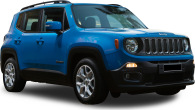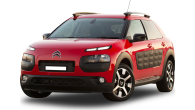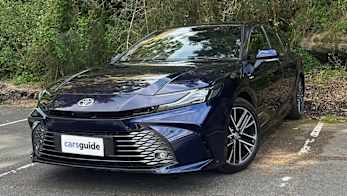While we don’t exactly need to point out the increasing popularity of SUVs, it is important to note they’re simultaneously growing and shrinking in size to accommodate all areas of the market.
Enter Toyota’s smallest one yet, the aptly named Yaris Cross.
Yep, the Yaris Cross is Toyota’s first light SUV, and it’s based on the Yaris hatchback, so it’s a pretty easy idea to wrap your head around. But look a little closer, and it’s clear a lot effort has been put into making it more than it seems.
Indeed, Toyota doesn’t want you to think the Yaris Cross is just a Yaris on stilts. Instead, it wants to make it clear this light SUV is much more than that.
So, is it a better to live with in the city than the Yaris? Let’s find out.
Toyota Yaris Cross 2021: Urban Cross
| Engine Type | Inline 3, 1.5L |
|---|---|
| Fuel Type | Unleaded Petrol |
| Fuel Efficiency | 5.4L/100km (combined) |
| Seating | 5 |
| Price From | $28,490 - $34,320 |
| Safety Rating |
|
Is there anything interesting about its design?
Well, you certainly can’t accuse the Yaris Cross of being boring, especially in Urban form.
And to be fair, images and videos don’t do the Yaris Cross justice. We had our reservations about its exterior, particularly that front end, but having now experienced it in the metal, it’s actually quite interesting – in a good way.
The stubby nose gives the Yaris Cross a distinctive – and perhaps divisive – look, but it’s certainly a strong face you’ll remember, with a touch of aggression provided by the wide but narrow grille
Then there’s the smart LED headlights positioned up high, which are complemented by the deep set of vertical LED daytime running lights found directly below.
Take in the side view, and the Yaris Cross attempts to remind you that it’s more than a just a high-riding hatchback, what with its obligatory black plastic wheelarch cladding and door mouldings.
It’s also here where our test vehicle’s two-tone paintwork really comes to the fore, with Ink Mica (black) the finish for all of its body panels except the roof, side-mirror covers and rocker mouldings, which are of the gold variety instead.
Yep, it’s got some personality.
The Urban also gets a slick set of 18-inch alloy wheels with 215/50 tyres, which add to the sporty aesthetic set off by the fast roofline.
The Yaris Cross is at its most conservative at the rear, with the bumper almost entirely black plastic, although the horizontally linked LED tail-lights do make it look more premium
Inside, the Urban continues to be daring, with eyes immediately drawn to its dark-brown artificial leather upholstery with tweed-like fabric inserts. It’s an acquired taste, and, if we're honest, it's not one we’re not sure we can stomach. And unfortunately, there’s no other factory option.
The dark-brown theme also extends to the lower dashboard and front door inserts, with the latter rather interesting to touch. And aside from the delightful soft-touch upper dashboard, hard plastics are used for almost every other surface, which is to be expected.
What isn’t is the undersized 7.0-inch central touchscreen, which does Toyota’s rather basic multimedia system absolutely no favours, with some words very hard to read. At least Apple CarPlay and Android Auto support is on hand.

Better executed is the 4.2-inch multifunction display, which is horizontally positioned between the separately enclosed tachometer and digital speedometer that, again, look a lot better in person. The leather-trimmed steering wheel with paddle-shifters is also a treat.

How practical is the space inside?
Measuring 4180mm in length (with a 2560mm wheelbase), 1765mm in width and 1590mm in height, the Yaris Cross is without question a compact vehicle, but that doesn’t mean it doesn’t pack a practicality punch.
In fact, its cargo capacity is very competitive, at 390L, although the 40/20/40 split-fold rear bench can be stowed to increase it to an undisclosed volume.
Of note, the Urban 2WD petrol’s boot has a false floor that unleashes its maximum cargo capacity when lowered. However, the disadvantage of doing so is the large hump created when the second row isn’t in use, not to the mention the high load lip that ensues, too
Either way, the boot’s aperture is wide and square, which makes loading bulkier items a cinch, while two bag hooks are on hand for the shopping, too.
Even the Yaris Cross’ second row is impressive when it comes to space, with three inches of knee-room available behind our 184cm driving position, alongside more than an inch of headroom.
That said, while the transmission tunnel is small, there still isn’t enough room for three adults to sit abreast and not be on top of one another.
Children, of course, will be fine sitting on the middle bench. Speaking of which, two ISOFIX and three top-tether anchorage points are available for fitting child seats.

Where things start to come undone, though, is the second-row amenities, or lack thereof. Yep, there aren’t any directional air vents or connectivity options, which is sure to annoy certain occupants.
The driver and front passenger fare much better, with two USB-A ports located on the centre stack, while the deep front cubby below house a 12V power outlet.
Other in-cabin storage options include a second, shallower cubby found higher up on the centre stack, underneath the central air vents. Then there’s the 5.7L glovebox, which has a fairly small usable area.

A central storage bin (and therefore armrest) is noticeably absent, with its usual position taken up by a pair of cupholders, one of which is ever so slightly smaller than the other.
A third cupholder for rear occupants to share is located at the back of the centre console. Alternatively, their door bins can hold 600mL bottles, while those up front can take 1.5L items.
Does it represent good value for the price? What features does it come with?
Nine Yaris Cross variants are available, with the Urban 2WD petrol tested here priced from $32,990 plus on-road costs, which is fairly reasonable for a flagship light SUV that’s well-specified. Alternatively, entry-level GX and mid-range GXL versions are available for $6000 and $3000 less respectively.
Standard equipment not already mentioned in the Urban petrol 2WD includes a space-saver spare wheel, power-folding side mirrors, rear privacy glass, a hands-free power-operated tailgate, satellite navigation, digital radio, a six-speaker sound system, a head-up display, keyless entry and start, heated front seats, a power-adjustable driver’s seat and single-zone climate control. An auto-dimming rearview mirror is the only significant feature missing here.

Paintwork is the only option here, with extra-cost colours attracting a $500 premium, while a two-tone look (black or gold roof, side-mirror covers and door mouldings) can be had for a separate $450. As mentioned, our test vehicle was finished in no-cost Ink Mica with gold.
For reference, the Yaris Cross Urban 2WD petrol goes tyre to tyre with the automatic Mazda CX-3 Akari 2WD ($35,950), Hyundai Venue Elite ($26,490) and Volkswagen T-Cross 85TSI Style ($30,990), among others.
What are the key stats for the engine and transmission?
The Yaris Cross tested here is motivated by a 1.5-litre naturally aspirated three-cylinder petrol engine that sends 88kW of power at 6600rpm and 145Nm of torque from 4800-5200rpm. Not exactly high-powered, then, but it doesn’t need to be.
The Urban 2WD petrol sends drive to the front wheels via a continuously variable automatic transmission (CVT) with a mechanical first gear and 10 simulated steps. Yep, it’s really trying to be something (a torque-converter unit) it’s not.
For reference, a 2WD hybrid version can be had for $2000 extra, while a AWD hybrid variant costs a further $3000. Both add two and three electric motors respectively as part of a ‘self-charging’ system that develops a combined 85kW.
How much fuel does it consume?
The Yaris Cross Urban 2WD petrol’s fuel consumption on the combined-cycle test (ADR 81/02) is 5.4L per 100km, while its carbon dioxide (CO2) emissions are 124 grams per km. Both claims are very solid.
For reference, the aforementioned 2WD hybrid and AWD hybrid versions consume an even better 3.8L/100km and 4.0L/100km while emitting 86g/km and 90g/km respectively.
In our real-world testing with the 2WD petrol, we averaged a more than respectable 6.8L/100km over 240km of driving split fairly evenly between city traffic and highways.
For reference, the Yaris Cross tested here has a 42L fuel tank that takes 91RON petrol at minimum.
Warranty & Safety Rating
What safety equipment is fitted? What safety rating?
Neither ANCAP nor its European counterpart, Euro NCAP, has awarded the Yaris Cross a safety rating yet.
Advanced driver-assist systems in the Urban 2WD petrol include autonomous emergency braking with pedestrian (day/night) and cyclist (day) detection, intersection assist (day), lane-keep and steering assist (including emergency), adaptive cruise control, road-sign recognition, blind-spot monitoring, rear cross-traffic alert, high-beam assist, surround-view cameras and front and rear parking sensors. Yep, you’re not left wanting much here
Other standard safety equipment includes eight airbags (dual front, front-side and curtain plus driver’s knee and centre), anti-skid brakes (ABS), brake assist and the usual electronic stability and traction control systems.
What does it cost to own? What warranty is offered?
As with all Toyota Australia models, the Yaris Cross comes with a five-year/unlimited-kilometre warranty, which lags behind Kia's seven-year term, let alone the 10-year standard set by Mitsubishi, which is dependent on vehicles being serviced by the dealer network.

Speaking of which, the Urban 2WD petrol’s service intervals are every 12 months or 15,000km, whichever comes first. A five-year/75,000km capped-price servicing plan is available for $1025, or just $205 per visit. Yep, it’s cheap to run.
What's it like to drive around town?
Being a light SUV, the Yaris Cross ought to be good to drive around town, and we can happily report it very much is, but that doesn’t mean it’s not without its shortcomings.
As mentioned, the Urban 2WD petrol’s engine isn’t exactly a powerhouse, but that’s not exactly an issue in city traffic, where it can plod along with ease.
However, if you need to make a quick manoeuvre or want to overtake a slower vehicle, then it ‘quickly’ becomes apparent just how relaxed the Urban 2WD petrol is. Needless to say, it’s straight-line performance can be summed up in one word: lethargic.

While cost would’ve likely been the deciding factor, it’s a wonder Toyota didn’t put the C-HR’s 85kW/185Nm 1.2-litre turbo-petrol three-cylinder engine in the Yaris Cross, as its low-down torque would’ve been very much appreciated.
That said, Yaris Cross buyers can instead opt for its hybrid powertrain, which comes with the benefit of ‘instant torque’, which is afforded by its electric motors.
We’d definitely be spending the extra money to go low-emissions (don’t worry about getting the almost-pointless AWD version), even if it does take some time for the fuel savings to make up the cost difference.
It’s worth pointing out the Urban 2WD petrol’s CVT isn’t to blame here. In fact, it’s one of the best we’ve sampled to date.
While often dreaded, this version has a mechanical first gear, which makes for much more natural off-the-line or low-speed acceleration (read: progressive).

In fact, the best compliment we can pay is how long it took us to remember there was a CVT on hand in the first place. Seriously, it was quite a while.
And even when travelling at speed, the Urban 2WD petrol doesn’t quickly jump around to higher engine speeds when the accelerator is breathed upon. Instead, it bides its time and largely does the right thing.
That’s not to say it doesn’t get noisy. If you bury your right foot, it will go after peak power without hesitation, exposing the droning side of the Urban 2WD petrol’s engine, which usually emits its characterful thrum in short spurts.
Meanwhile, the Yaris Cross rides comfortably in the urban jungle, with the Urban 2WD petrol’s suspension set-up consisting of a MacPherson-strut front axle and a rear torsion beam.
The latter tends to skip a bit over rolling bumps, but it’s otherwise more than competent alongside the former, soaking up nearly all other road imperfections.
In tow is the electric power steering system that’s employed by all nine Yaris Cross variants. It’s well-balanced for suburban driving, proving to be quick enough with just the right amount of weight and adequate feedback.
The Yaris Cross isn’t shy of a corner, either, taking the opportunity to show off its strong body control (one advantage of the Urban 2WD petrol’s 1185kg kerb weight), even if it does sometimes push wide when driven hard. Yep, handling is yet another strong suit.
Verdict
On debut, the Yaris Cross is arguably a class leader. Yes, it’s expensive, but some of its key rivals are more so – and by some degree. Naturally, you can get a more affordable – and lower-spec – variant than the Urban 2WD petrol tested here, so keep that in mind.
Either way, the Yaris Cross is surprisingly practical, not short on safety, and rides and handles with the best of them. Of course, the Urban 2WD petrol doesn’t excel when not doing the slow crawl, so consider the hybrid version, but this is a very compelling package.
Once again, Toyota has expanded its model line-up and done so by introducing something new that’s genuinely good in nearly all areas. In fact, we’d say the Yaris Cross is actually great in a lot of them. All of this just makes you wonder what segment’s next…
Pricing Guides






















































































.JPG)
.jpg)
.jpg)



